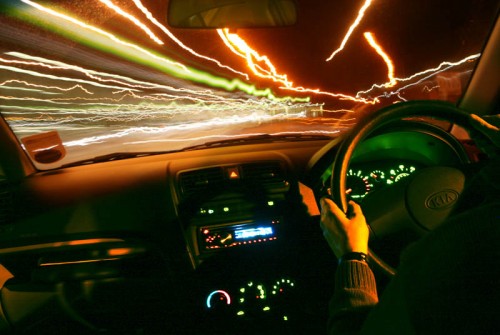There are more than 210 million licensed drivers in the United States and these individuals make approximately 400 million trips each year. Whether they are commuting to or from work or school, enjoying family vacations, or attending sporting events or religious retreats, many of people drive at night. Driving after the sun sets has unique challenges particularly for new drivers so follow these tips to navigate roadways safely at night.
Rates of traffic deaths increase by three times at night. Unfortunately, many drivers are not aware of night driving hazards or how to address them. Vision is limited at night because the contrast and color available during the day is not present. Peripheral vision and depth perception are also diminished at night, requiring drivers to exercise higher levels of caution.
To improve night vision and the ability to drive, turn on headlights an hour before sunset so other drivers have an easier time seeing your vehicle during twilight. Headlights should also be used for at least one hour after the sun rises. Use low beam headlights in foggy conditions because high beams reduce your ability to see. If another car has its high beams on, do not flash yours in response because this can impair the vision of that driver.
Do not look at oncoming headlights while driving. Instead look toward the right of the road and watch the line that marks the outer edge of this traffic lane. Use the nighttime feature on the rearview mirror to reduce the reflection of headlights behind you. If streetlights are glary, dim the lights on the dashboard, turn off other interior lights, and use the sun visor carefully. If you must pull over to the side of the road, turn on the emergency flashers.
Dirty headlights can be up to 90 percent less efficient and dirty windows can make it more difficult to see because they increase glare. Clean both the interiors and exteriors of windshields and windows and keep headlights clean. Increase response time by increasing following distance by four or five seconds. Keep eyes moving at intersections, curves, and inclines to identify flashes of light that may be vehicle headlights.
Before hitting the roadway, align exterior mirrors to reduce blind spots and glare from following vehicles. Adjust outside mirrors so the body of the car is just outside of view. Once on the road, decreased visibility during nighttime makes driving too fast even more dangerous so regulate speed. To avoid becoming tired when driving at night, create adequate ventilation and take frequent breaks to rest the eyes.
*Photo Courtesy of Alan Cleaver via Creative Commons License

